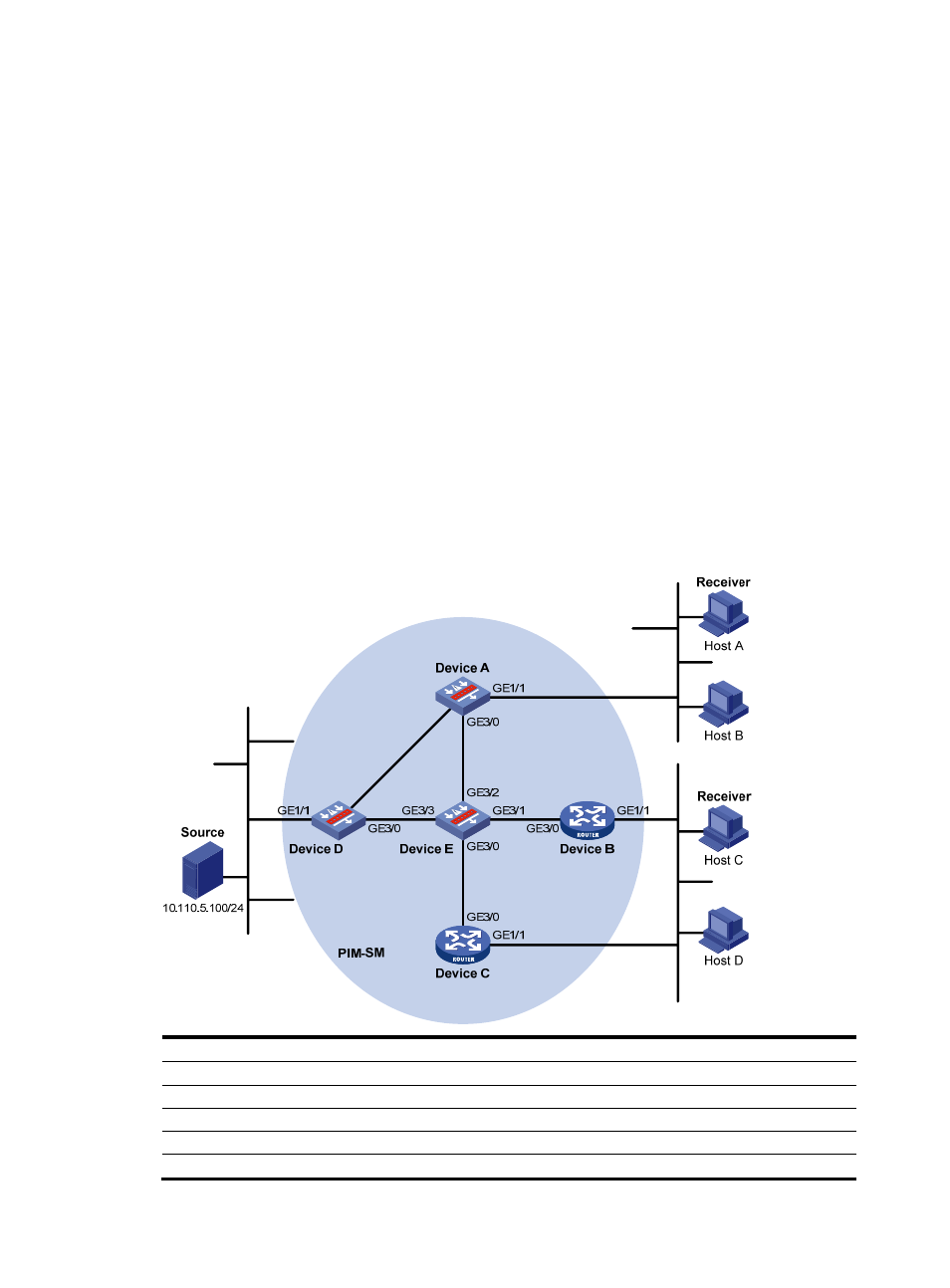Pim-sm non-scoped zone configuration example, Network requirements – H3C Technologies H3C SecPath F1000-E User Manual
Page 135

39
Protocol: pim-dm, UpTime: 00:03:27, Expires: never
PIM-SM Non-Scoped Zone Configuration Example
Network requirements
•
As shown in
, receivers receive VoD information through multicast. The receiver groups of
different organizations form stub networks, and one or more receiver hosts exist in each stub
network. The entire PIM-SM domain contains only one BSR.
•
Host A and Host C are multicast receivers in two stub networks N1 and N2. Device D connects to
the network that comprises the multicast source (Source) through GigabitEthernet 1/1. Device A
connects to stub network N1 through GigabitEthernet 1/1, and to Device D and Device E through
GigabitEthernet 2/0 and GigabitEthernet 3/0 respectively. Device B and Device C connect to stub
network N2 through their respective GigabitEthernet 1/1, and to Device E through their respective
GigabitEthernet 3/0.
•
Both GigabitEthernet 3/0 on Device D and GigabitEthernet 3/2 on Device E act as C-BSRs and
C-RPs; the C-BSR on Device E has a higher priority; the range of multicast groups served by the C-RP
is 225.1.1.0/24; modify the hash mask length to map a certain number of consecutive group
addresses within the range to the two C-RPs.
•
IGMPv2 is to run between Device A and N1, and between Device B/Device C and N2.
Figure 11 Network diagram for PIM-SM non-scoped zone configuration
Ethe
rnet
Ethe
rnet
Ethern
et
N1
N2
GE2/0
G
E2/
0
Device
Interface
IP address
Device
Interface
IP address
Device A
GE1/1
10.110.1.1/24
Device D
GE1/1
10.110.5.1/24
GE2/0
192.168.1.1/24
GE2/0
192.168.1.2/24
GE3/0
192.168.9.1/24
GE3/0
192.168.4.2/24
Device B
GE1/1
10.110.2.1/24
Device E
GE3/0
192.168.3.2/24
GE3/0
192.168.2.1/24
GE3/1
192.168.2.2/24
